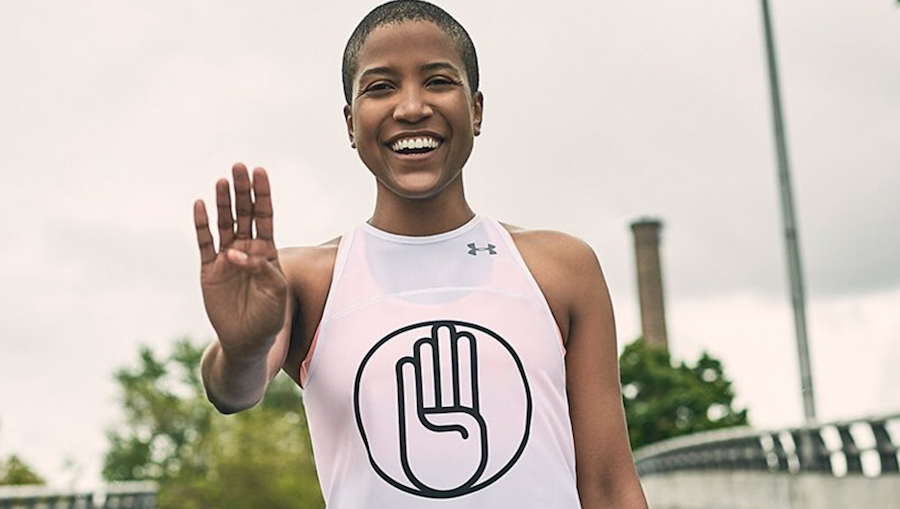Speaking at Goldman Sachs Annual Global Retailing Conference in New York City, both Under Armour Chairman and CEO Kevin Plank and CFO Dave Bergman stressed that the company had shifted to “activation mode from acquisition mode.”
Plank noted that the company had grown to from $2.3 billion in 2013 to $4.8 billion in 2016 to solidify its spot as the third-largest sporting goods company globally behind Nike and Adidas.
Still, Plank noted that there’s a “much farther difference” between number two and three than three versus four with its two competitors five to seven times larger than Under Armour. As such, Under Armour has to remain smart about its investments to protect its bottom line. Stated Plank, “We have to be the ones who play ‘Moneyball.’”
One noticeable area of restraint in spending will be in sports marketing assets. Plank said he’s “incredibly proud of the roster we have” but the company has “enough” to support its positioning as an “authentic” athletic brand. Indeed, Plank believes that amid the company’s recent challenges in the North American market, “a lot of people focus on the things that we don’t have and not what we do have as a company.”
Marketing assets include 42 Division 1 college programs, its new partnership with MLB that extends through 2030, and some of sports biggest stars, including Jordan Spieth, Stephen Curry, Tom Brady and Cam Newton.
Plank noted that Under Armour has had to walk away from a few deals that became too rich. For instance, it relinquished its partnership with Tottenham Hotspur after the bidding grew close to five-times its previous deal and wound up signing Southampton instead to maintain a presence in the English Premier League.
“We can do anything, we just can’t do everything,” Plank said several times at the conference to exemplify the spending-priority shift.
Plank said company will continue to act “opportunistically” on deals, pointing to the MLB deal as well last year’s signing of UCLA, which at the time represented the largest shoe and apparel sponsorship in college sports history. The UCLA deal provided Under Armour with strong coverage in California, which he called the seventh largest economy in the world, with the deal also supported by its sponsorship of The University of California and five MLB teams playing in the state.
Primarily, however, Plank said it’s “just a matter of execution” on the assets the brand already has rather than adding more assets.
“When we say ‘Out of acquisition mode and into activation mode,’ we mean it wholeheartedly,” said Plank. “It doesn’t mean we will not be opportunistic if something really good comes along. But it better be a really good deal. And as I’ve said, ‘Anything is possible for us but we don’t need anything else.’ I’d rather take any dollars that we’d use for anything new and put it into activation in telling people who we have, how great they are and how great they look wearing Under Armour gear.”
In the same vein, Plank said the brand now has “enough distribution” following its moves earlier this year to start selling to Kohl’s as well as Famous Footwear and DSW. The goal is “to become excellent wherever we do business” with better segmentation efforts, including fine-tuning its “good, better, best” positioning, as well as providing “reasons for consumers to go there.”
The brand has no plans to open up any more “big boxes” although it may open up smaller niche stores to support growth opportunities in areas such as footwear and women’s.
Plank also asserted the brand is not over-distributed, noting that the company has 14,000 points of distribution in North America versus 23,000 for Nike. The moves into broader channels will help Under Armour build the scale required to “live up to our billing as the third largest brand” while also enabling the brand to reach consumers it never reached before.
To drive sell-throughs, Bergman, the CFO, noted that beyond having the “right breath of assortment for the right consumer at each channel, Under Armour’s focus will be on having the correct “price ratio.”
The two officials noted that the company has learned from the promotional climate seen in the fourth quarter and that has continued so far this year. Plank pointed out that Under Armour’s $54 hoodie had always been a staple of its business but its primary competitor had one at $45 that was marked off by 30 percent as soon as it reached the selling floor. Plank said the premium pricing lost the mom “just looking for something” and Under Armour’s pricing needed to be more aligned with competitors.
Under Armour will also focus on bringing more “newness” and “freshness” to selling floors in season while using its outlets to more quickly liquidate older items.
At the same time, Under Armour will continue to make investments in its infrastructure to support its goal of becoming a $5 billion company. These investments include the recent hiring of a new president, Patrick Frisk, upgrading its ERP system with SAP and its new category-management initiative. International, which grew 57 percent in the second quarter, remains a priority for growth to add more diversity given that North America still accounts for 80 percent of the business. Diversifying the business will also include continued expansion in women’s, footwear, online and into more fashionable and lifestyle offerings. Expansion at its full-price Brand House locations is being tempered.
Plank said Under Armour will remain “very much a performance-driven brand. I don’t think that ever goes out of style.” But he also noted that fashion remains a largely untapped opportunity for the brand.
“We have an opportunity to take sports and athletes to a new space,” Plank said. “Sports style is an opportunity. We know what cool looks like and that will be reflected in our assortments.”
Photo courtesy Under Armour
















